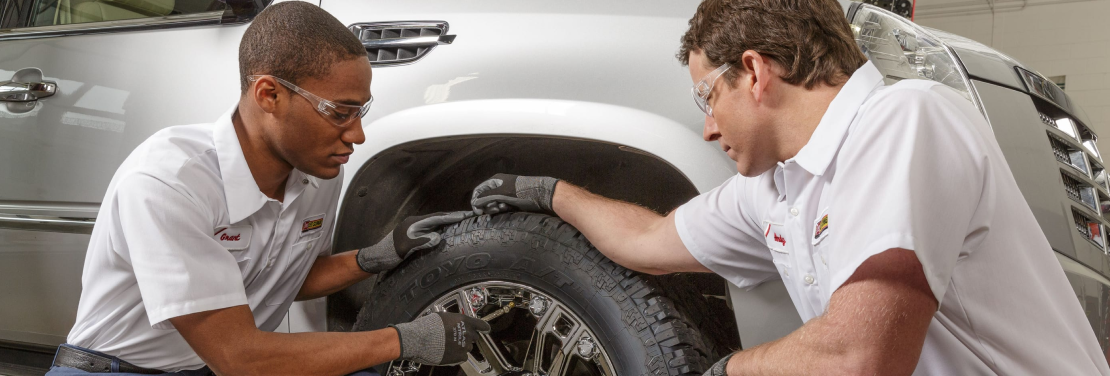Morris Tire and Alignment: Your Trusted Source for Reliable Service
Morris Tire and Alignment: Your Trusted Source for Reliable Service
Blog Article
Tire Service: Recognizing Tire Stress Monitoring Systems
Understanding Tire Pressure Surveillance Equipments (TPMS) is an essential aspect of preserving optimal car performance and safety and security on the roadway. With innovations in automobile technology, TPMS has actually come to be a basic attribute in modern-day cars, supplying real-time details on tire stress degrees.

Importance of TPMS
The value of Tire Stress Surveillance Equipments (TPMS) exists in their capability to enhance car safety and security and efficiency with real-time monitoring of tire stress levels. Maintaining the correct tire stress is vital for making sure ideal handling, stopping, and total security of a vehicle. TPMS gives motorists with instant responses on any overinflated or underinflated tires, enabling timely changes to be made.
Parts of TPMS
Making up numerous essential aspects, a Tire Pressure Monitoring System (TPMS) works as an advanced safety and security function in modern automobiles. The main parts of a TPMS include sensors, a control module, and a warning indication. Sensors are generally situated in the tire valve stem or attached to the wheel assembly, where they measure tire pressure and transfer information to the control module. The control component processes this information and causes a caution if it detects considerably low pressure in any one of the tires. The caution indication, often a symbol on the control panel, notifies the vehicle driver to examine the damaged tire or tires. Some advanced TPMS designs additionally show the actual tire stress readings for each tire, providing motorists with real-time information to make sure ideal tire efficiency and safety and security. By keeping an eye on tire stress continuously, TPMS helps avoid mishaps, minimizes tire wear, and improves gas effectiveness, making it a critical part for lorry security and efficiency.
Sorts Of TPMS

On the various other hand, indirect TPMS depends on the car's wheel rate sensors to check tire pressure. This system finds underinflation by contrasting the rotational speeds of the wheels. Indirect TPMS is less pricey than direct TPMS, as it uses existing sensors within the car.
While direct TPMS provides much more precise readings, indirect TPMS is simpler in style and commonly calls for less maintenance. Both systems have their advantages and constraints, and the choice between them frequently depends upon elements such as cost, vehicle make, and individual choice. Comprehending the differences between these 2 sorts of TPMS can assist automobile owners make notified decisions concerning tire upkeep and safety.
TPMS Upkeep Tips
Efficient upkeep of TPMS is necessary for making sure optimal efficiency and safety and security of your automobile. On a regular basis inspecting the TPMS sensors for any kind of damages or browse around here corrosion is crucial. Make certain that the sensors are clean and totally free from particles that can hinder their performance. Furthermore, it is advisable to check the sensing unit batteries periodically and replace them as needed to assure accurate analyses. Conduct routine examine the tire stress degrees and compare them with the TPMS analyses to ensure they are regular. Alter the system following the producer's standards if there are any kind of discrepancies. In addition, throughout tire rotation or replacement, make certain that the TPMS elements are handled thoroughly to avoid any kind of possible damage. If the TPMS alerting light illuminates on the dashboard, resolve the issue promptly by inspecting the tire stress and the overall system for any mistakes. By adhering to these upkeep pointers, you can lengthen the lifespan of your TPMS and boost the security of your driving experience.
Benefits of Proper Tire Pressure
Preserving proper tire pressure, as emphasized in TPMS Upkeep Tips, is critical for gaining the countless advantages connected with optimum tire stress degrees. Among the key advantages of preserving the right tire pressure is improved gas efficiency. When tires are effectively inflated, there is much less rolling resistance, bring about much better fuel economy. In addition, appropriate tire stress makes sure even tire wear, extending the life-span of the tires and promoting more secure driving conditions. With the appropriate tire stress, lorries likewise have much better handling and grip, especially in damaging weather conditions. This can improve total driving efficiency and security for the motorist and travelers. Preserving optimal tire stress can contribute to a smoother and a lot more comfortable adventure by minimizing resonances and sound caused by my response underinflated tires. Finally, the advantages of appropriate tire stress surpass just tire longevity; they encompass improved fuel efficiency, improved safety and security, better automobile performance, and total driving comfort.
Verdict
To conclude, comprehending tire stress tracking systems (TPMS) is critical for check my source maintaining ideal tire pressure and ensuring lorry safety and security. By recognizing the significance of TPMS, being familiar with its elements, knowing the various kinds available, adhering to proper maintenance pointers, and realizing the benefits of maintaining proper tire stress, motorists can boost their driving experience and prolong the life-span of their tires. Appropriate tire pressure is vital to reliable and risk-free car operation.

Report this page